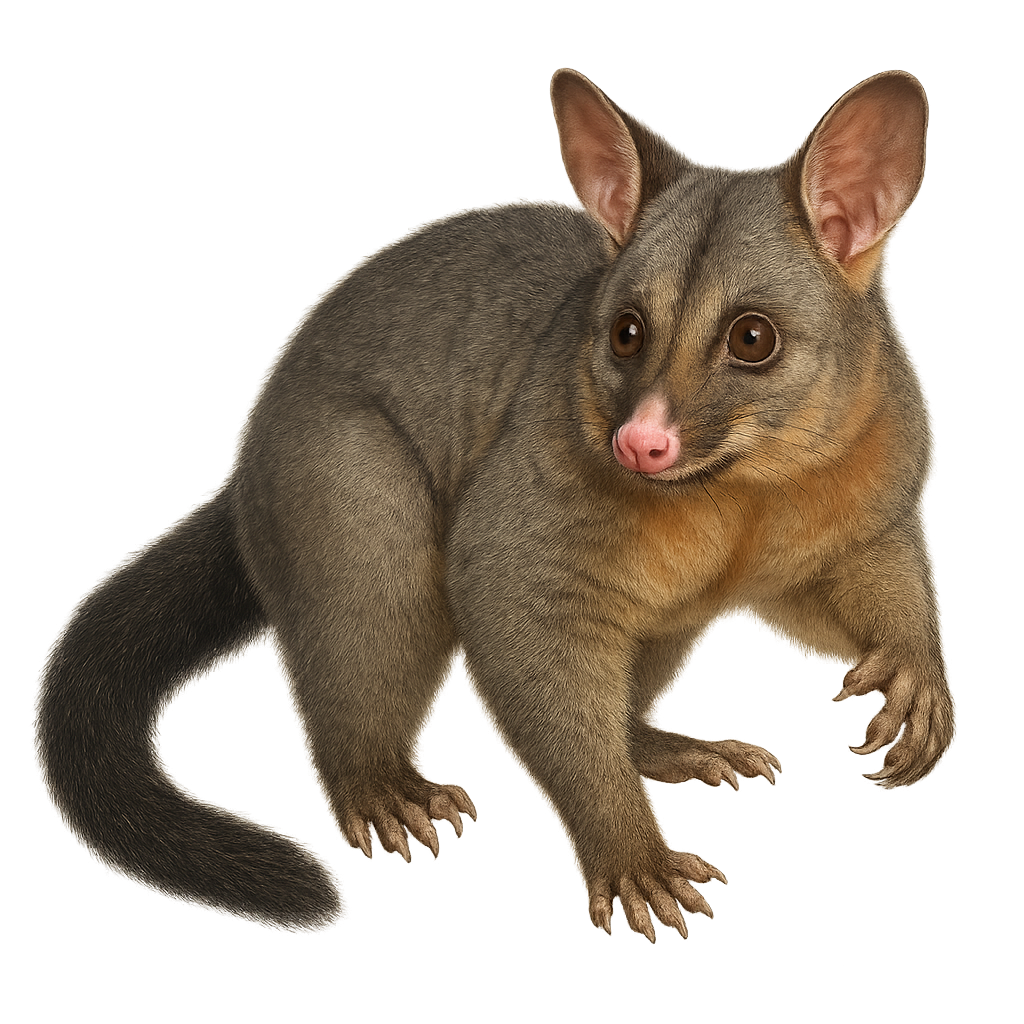Your wildlife photography guide.
Explore the common brushtail possum in detail, study its behavior, prepare your shots.
Where to observe and photograph the common brushtail possum in the wild
Learn where and when to spot the common brushtail possum in the wild, how to identify the species based on distinctive features, and what natural environments it inhabits. The WildlifePhotographer app offers tailored photography tips that reflect the common brushtail possum’s behavior, helping you capture better wildlife images. Explore the full species profile for key information including description, habitat, active periods, and approach techniques.
Common Brushtail Possum
Scientific name: Trichosurus vulpecula

IUCN Status: Least Concern
Family: PHALANGERIDAE
Group: Mammals
Sensitivity to human approach: Tolerant
Minimum approach distance: 5 m
Rut period: March to May
Gestation: 16-18 jours
Births: March to June
Habitat:
forests, urban areas, savannas
Activity period :
Mainly active at night, generally discreet during the day.
Identification and description:
The Trichosurus vulpecula, commonly known as the common brushtail possum, is an arboreal marsupial native to Australia. It has dense, soft fur, usually grey, and a prehensile tail that aids in tree navigation. This nocturnal omnivore feeds on leaves, fruits, flowers, and occasionally insects. Well-adapted to urban environments, it thrives even in human-inhabited areas. The brushtail possum plays an important ecological role as a seed disperser and pollinator. However, it can sometimes be considered a pest due to its feeding habits and adaptation to urban settings.
Recommended lens:
300 mm – adjust based on distance, desired framing (portrait or habitat), and approach conditions.
Photography tips:
To photograph the common brushtail possum, focus on nighttime hours as it is primarily active at night. Use a lens of 300mm or more to capture detailed images from a distance without disturbing it. A tripod can be useful for stabilizing your camera in low-light conditions. Be patient and discreet, as although it is tolerant, it can be startled by sudden movements. Favor natural environments like forests or urban parks where it is more likely to forage.
The WildlifePhotographer App is coming soon!
Be the first to explore the best nature spots, track rutting seasons, log your observations, and observe more wildlife.
Already 1 439 wildlife lovers subscribed worldwide

